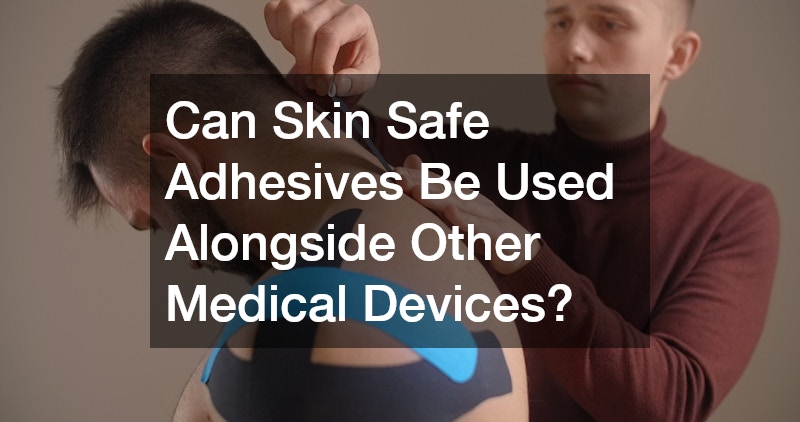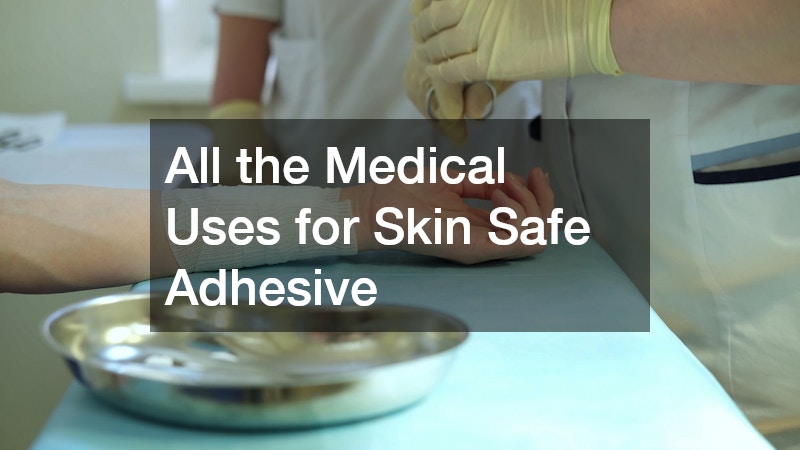Skin safe adhesives play a vital role in modern healthcare, facilitating numerous medical procedures and promoting better patient outcomes. The ability to adhere securely without irritating is crucial in various medical contexts.
Understanding their applications and benefits is essential for healthcare professionals.
What is Skin Safe Adhesive and Its Primary Uses?
Definition and Composition
Skin safe adhesives are specialized materials designed to adhere to the skin without causing harm or irritation. They are formulated with hypoallergenic compounds to ensure patient comfort and safety.
These adhesives typically consist of medical-grade acrylics or silicones. The formulation is tailored to provide strong adhesion with skin safe adhesive while being gentle enough for sensitive skin.
In healthcare, their importance lies in their ability to maintain a secure hold under various conditions. This reliability is critical in both short-term and long-term medical applications.
Common Medical Applications
Wound care is one of the primary applications for a skin safe adhesive. They help to secure dressings in place, protecting the affected area from contaminants.
In surgical procedures, these adhesives are indispensable. They ensure that surgical dressings remain in position, providing an environment conducive to healing.
Furthermore, a skin safe adhesive is used in diagnostic procedures to affix monitoring devices to the skin. This application is critical for accurate data collection.
How Does Skin Safe Adhesive Benefit Wound Management?
Promoting Healing and Protection
Skin safe adhesives facilitate wound healing by keeping dressings intact over the wound. This stability prevents further injury and promotes a sterile healing environment.
Moreover, they act as a barrier against external infections. Their use is pivotal in reducing the risk of secondary complications in wound management.
The adhesives also help retain appropriate moisture levels. This balance is essential for optimum cellular regeneration in the wound area.
Reduction of Scarring
By securing the wound edges, a skin safe adhesive plays a role in minimizing scar formation. This containment helps the tissue to heal more uniformly.
Their application reduces tension on the skin, which is a significant factor in scar development. Patients can benefit from improved aesthetic outcomes thanks to these properties.
Additionally, they support the use of silicone gel sheets, known for their efficiency in scar management. The combination of these products can notably enhance healing results.
What Role Do Skin Safe Adhesives Play in Surgical Procedures?
Use in Surgical Dressings
During post-operative recovery, the securement of surgical dressings is imperative. Skin safe adhesives ensure these dressings stay in place, facilitating undisturbed healing.
The adhesives also provide a non-traumatic removal. This feature is crucial for minimizing discomfort and protecting healing skin during dressing changes.
In surgeries requiring multiple dressing applications, the reliable adherence of these adhesives is invaluable. They provide consistency in care, which is vital for surgical success.
Post-Surgical Recovery Enhancements
Skin safe adhesives enhance patient recovery by ensuring that dressings do not shift. This stability contributes to more consistent healing and reduces postoperative complications.
Their ability to hold securely without irritating the skin promotes patient comfort. Additionally, it minimizes the incidence of dressing-related skin issues.
The reduction in dressing change frequency due to secure adhesives also limits exposure to potential infections. This outcome is a considerable advantage in complex surgical recoveries.
Are There Specific Skin Safe Adhesives for Pediatric and Geriatric Care?
Pediatric Applications
In pediatric care, skin safe adhesives are tailored to accommodate sensitive, developing skin. Their gentle formulation is key in minimizing distress during medical treatments.
These adhesives are used across a wide range of pediatric treatments, from minor scrapes to complex surgeries. Compatibility with fragile skin is prioritized in product development.
Additionally, their hypoallergenic properties reduce the risk of allergic reactions in young patients. This assurance is crucial for parents and healthcare providers alike.
Geriatric Skin Health Considerations
For geriatric patients, adhesives must be gentle to account for thinner, more delicate skin. skin safe adhesives provide the required support without compromising skin integrity.
These adhesives offer secure adhesion necessary for maintaining the placement of dressings on older patients. Minimizing friction and irritation is a cornerstone of their design.
They also integrate well with the use of moisturizing agents that protect aging skin. This combination supports overall skin health among the elderly.
Can Skin Safe Adhesives Be Used Alongside Other Medical Devices?
Compatibility with Medical Equipment
Skin safe adhesives are engineered to work effectively with various medical devices. This compatibility ensures that devices such as monitors and catheters adhere securely to the skin.
Their use allows for seamless integration with diagnostic and therapeutic technologies. This adaptability is vital in maintaining device functionality.
Moreover, their low-reactivity formulation ensures they do not interfere with electronics. This quality maximizes the utility of medical devices during patient monitoring.
Safety in Long-Term Treatments
In long-term medical treatments, the safety of skin safe adhesives is paramount. Their durability and gentle adhesion make them suitable for extended use without compromising skin health.
The adhesives are designed to tolerate prolonged wear, reducing the need for frequent changes. This feature enhances comfort and convenience for patients undergoing long-term care.
Furthermore, their hypoallergenic nature ensures they remain safe for continuous use. This characteristic is essential in preventing skin reactions over extended periods.




